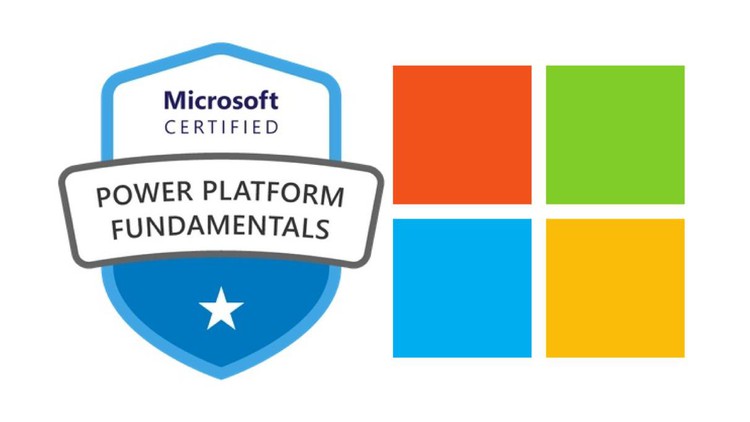
PL-900 Power Platform Fundamentals Practice Exams with Tips , Tricks ,Detailed explanation and References !
What you will learn
Test if you are really prepared for the PL-900 exam with the latest references.
At the end of each practice Tests you will have a graph with your score.
We have prepared the questions so that you feel safe when taking the official exam.
Understand Hotspot questions and the most common questions which are more likely to be found in the official exam
Description
Can you really take the PL-900 exam?
All of our practice tests with questions and answers for you to improve your knowledge on PL-900: Microsoft Power Platform Fundamentals.
This practice test contains multiple questions to help you get better results when taking the PL-900 exam.
About the Microsoft Power Platform Fundamentals PL-900 certification
Candidates for the PL-900 exam are users who want to improve productivity by automating business processes, analyzing data to produce business insights, and acting more effectively by creating simple application experiences.
Skills measured:
- Describe the business value of Power Platform .
- Identify the core components of Power Platform.
- Demonstrate the capabilities of Power BI .
- Describe the capabilities of Power Apps.
- Demonstrate the capabilities of Power Automate.
- Demonstrate the business value of Power Virtual Agents.
Advantages when purchasing our practice Tests:
- You only buy once and have lifetime access.
- Content updated frequently.
- All exam objectives are addressed so that the student knows if he / she is prepared for the exam.
- Performance-based practice tests provide the student with a better learning experience.
- The timed person prepares the conditions for the “exam” with a graphical score at the end.
- You have a 30-day refund if you don’t like our practice tests for any reason.
The Microsoft Power Platform Fundamentals or PL-900 important domains,
- Business value of Power Platform
- Identification of core components in Power Platform
- Business capabilities of Power BI
- Business value of Power Apps
- Business value of Power Automate
- Business value of Power Virtual Agents
Details :
Describing the value of Power Platform applications
- Firstly, analyzing data by using Power BI
- acting with Power Apps
- building solutions that use Microsoft Dataverse
- Then, automating with Power Automate
- After that, interoperating with external systems and data
- Finally, creating powerful chatbots using a guided, no-code graphical interface
Describe the business value of extending business solutions by using Power Platform
- describe how Dynamics 365 apps can accelerate delivery of Power Platform business solutions
- describe how Power Platform business solutions can be used by Microsoft 365 apps including Microsoft Teams
- describing how Power Platform business solutions can consume Microsoft 365 services
- describing how Power Platform business solutions can consume Microsoft Azure services including Azure Cognitive Services
- describe how Power Platform business solutions can consume third-party apps and services
Describe Power Platform administration and security
- describing how Power Platform implements security including awareness of Microsoft Dataverse security roles, Azure Identity Services, and Access Management (IAM)
- describe how to manage apps and users
- describe environments
- describing where to perform specific administrative tasks including Power Platform Admin center, Microsoft 365 admin center
Identify the Core Components of Power Platform
Describe Microsoft Dataverse
- Firstly, describing the Power Apps user experience
- identifying tables, columns, and relationships
- describing environments
- Then, explaining use cases and limitations of business process flows
- explaining use cases and limitations of business rules
- Subsequently, describing the Common Data Model (CDM)
- Finally, describe how to use common standard tables to describe people, places, and things
Describe Connectors
- describe the native Dataverse connection experience
- describe triggers including trigger types and where triggers are used
- describing actions
- describe licensing options for connectors including standard or premium tier Identify use cases for custom connectors
Demonstrate the capabilities of Power BI
Identifying common Power BI components
- identify and describe uses for visualization controls including pie, bar, donut, and scatter plots and KPIs
- describe types of filters
- describing the Power BI Desktop Reports, Data, and Model tabs
- describe uses for custom visuals including charts or controls Compare and contrast dashboards and workspaces
- compare and contrast Power BI Desktop and Power BI Service
- compare and contrast dashboards, workspaces, and reportsConnect to and consume data
- combining multiple data sources
- cleaning and transforming data
- describing and implementing aggregate functions
- identifying available types of data sources
- describing and consuming shared datasets and template apps
Building a basic dashboard using Power BI
- designing a Power BI dashboard
- designing data layout and mapping
- publishing and sharing reports and dashboards
Demonstrate the capabilities of Power Apps
Identifying common Power Apps components
- Firstly, describe differences between canvas apps and model-driven apps
- describe portal apps
- identify and describe types of reusable components including canvas component libraries and Power Apps Component Framework (PCF) components
- Lastly, describe use cases for formulas
Building a basic canvas app
- describe types of data sources
- connect to data by using connectors
- combine multiple data sources
- use controls to design the user experience
- describe the customer journey
- publish and share an app
Demonstrate the capabilities of Power Automate
Identifying common Power Automate components
- identifying flow types
- describing use cases for flows and available flow templates
- describe how Power Automate uses connectors
- describing loops and conditions including switch, do until, and apply to each
- describe expressions
IMPORTANT:
Unofficial testing practice.
We offer educational materials and practical tests to assist and help students prepare for these exams.
All certification marks used are the property of the respective owners of the marks. We do not own or claim any ownership in any of the Marks.